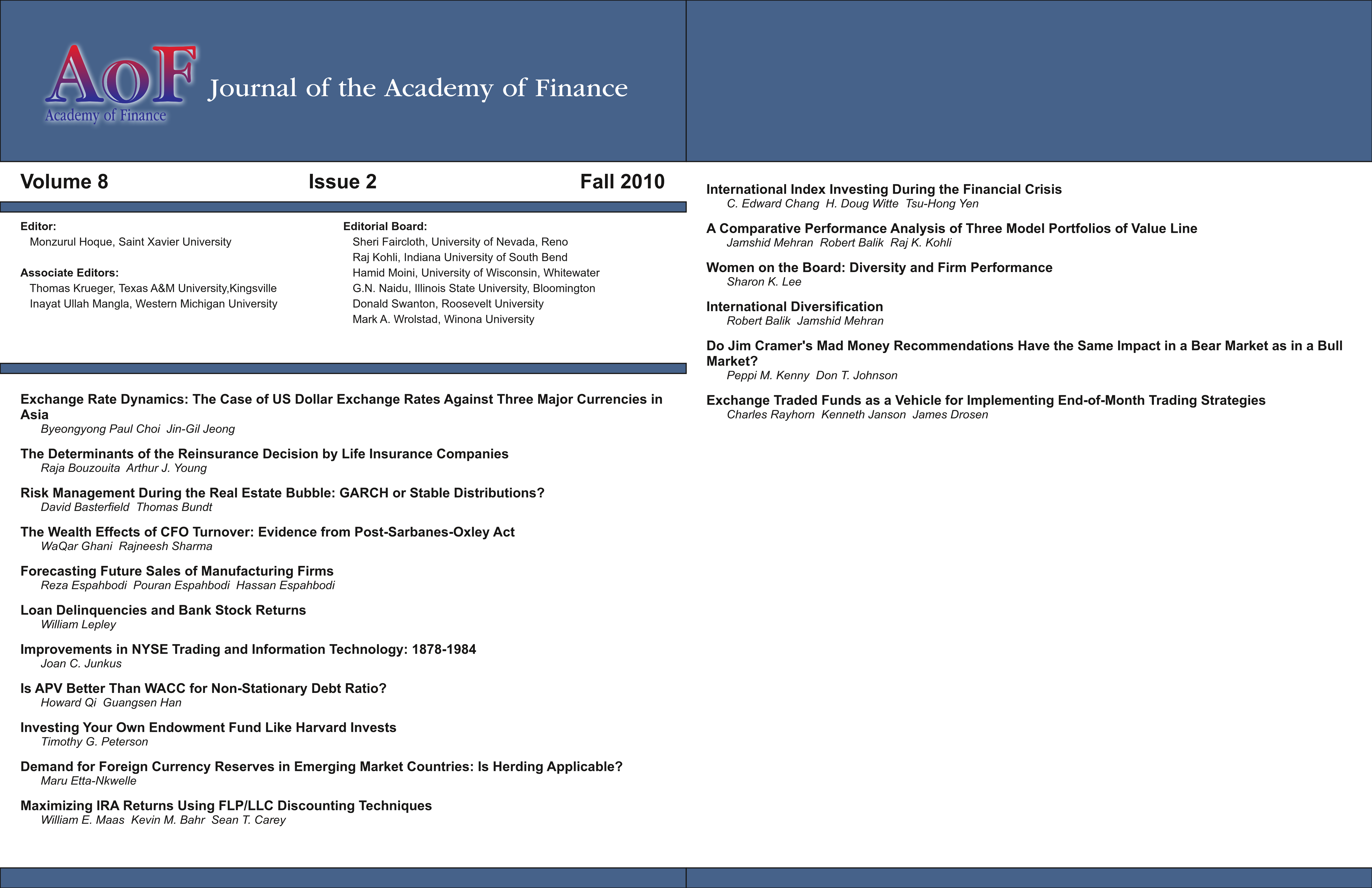Risk Management During the Real Estate Bubble: GARCH or Stable Distributions?
DOI:
https://doi.org/10.58886/jfi.v8i2.2342Abstract
This paper backtests Value-at-Risk (VaR) for the Stable Paretian and GARCH models applied to the real estate bubble of 2005-2008. Specifically, we use a rolling time-varying quantile estimation method to backtest Value-at-Risk (VaR) on a widely-held real-estate ETF. Our statistical analysis allows us to test for both distributional assumptions and a model’s ability to track volatility clustering. We find that neither the Stable Paretian nor GARCH model performs satisfactorily for both 95% and 99% VaR and over both crisis and pre-crisis periods. In some cases our rolling time-varying parameter estimation methodology allows the Stable model to successfully track volatility clustering, a procedure simpler to apply than standard GARCH models. Our results are sensitive to the length of the conditioning window, with both models doing better for the 50-day window relative to 100 and 200-day windows. Finally, of particular interest is the Stable model’s high frequency of rejecting the unconditional coverage null, suggesting the Stable distribution poorly fit the data.





